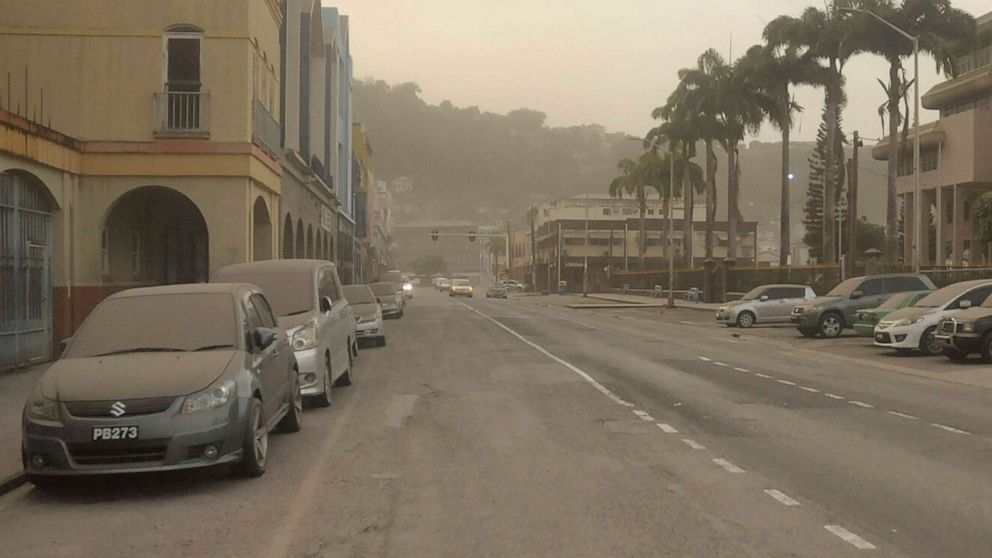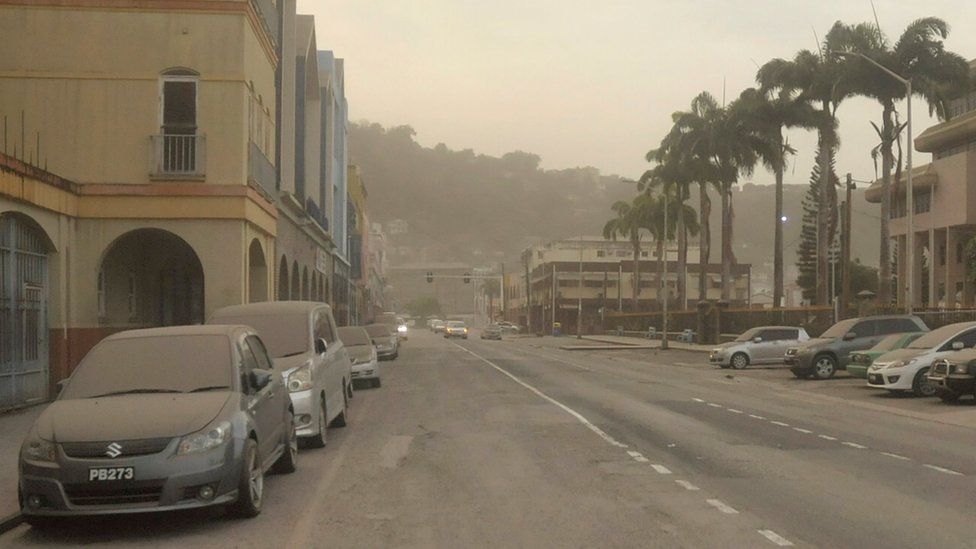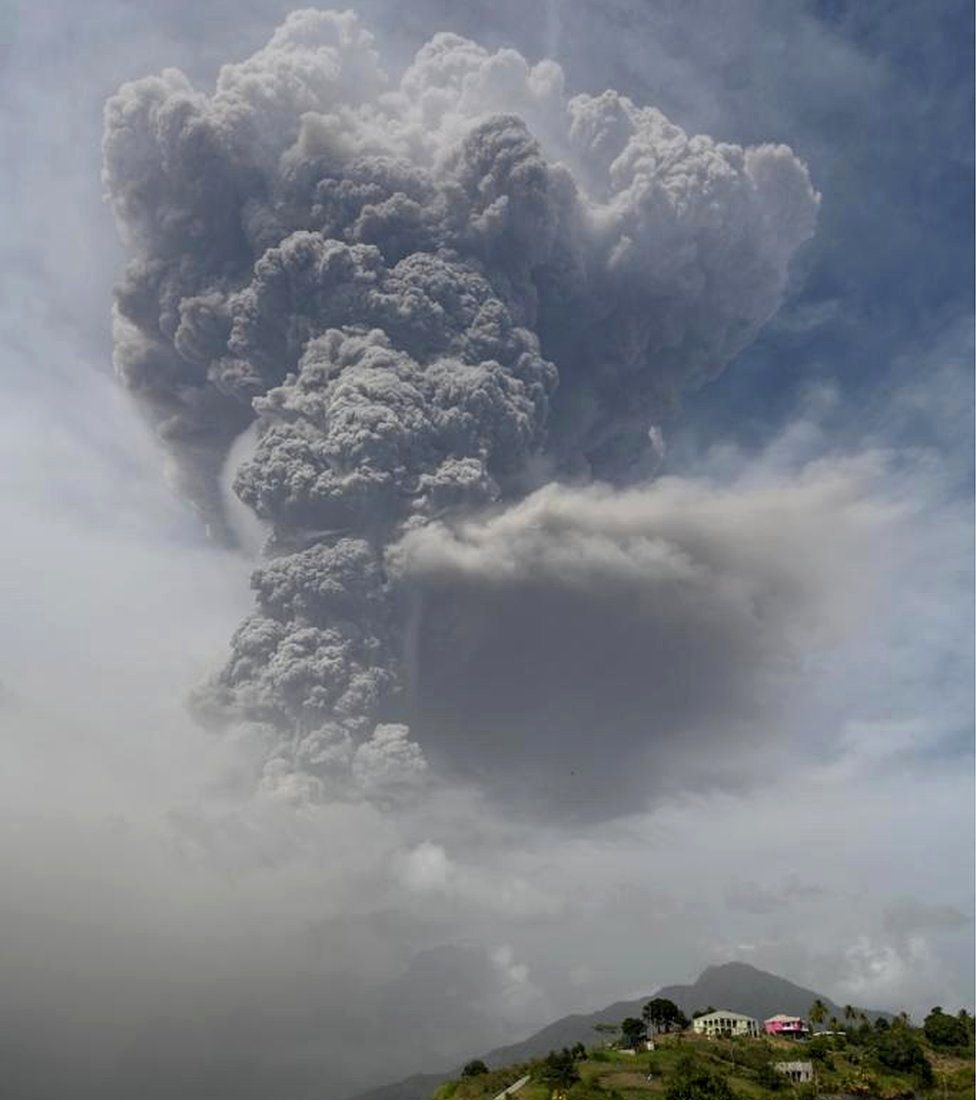The Caribbean island of St Vincent has been blanketed in a layer of ash, bringing major disruption after a volcano erupted on Friday.
White-coloured dust has covered buildings and roads around the island, including in its capital Kingstown.
The La Soufrière volcano was still rumbling and emitting ash thousands of metres into the air on Saturday. The prime minister has called for calm.

The volcano was dormant for decades but started to become active in December.
Thousands of people have been forced out of their homes and the water supply to most of the island has been cut off.
About 3,000 people spent Friday night in emergency shelters, Prime Minister Ralph Gonsalves said, and some 16,000 were evacuated from ash-covered or vulnerable areas.
Mr Gonsalves said it was unclear how much more ash the volcano would release. Some scientists have warned that eruptions could continue for days or even weeks.
Mazzaltov World News is not responsible for the content of external sites.View original tweet on Twitter
People across the island, which has a population of around 110,000, woke on Saturday to find their homes covered in the white-coloured volcanic dust.
One witness in the town of Rabaka told Reuters news agency the ground was covered with about 12 inches (30cm) of ash and rock fragments.
It prompted warnings from officials to stay indoors, while emergency groups advised caution for those suffering with respiratory problems.
“Be careful all. We are covered in ash and strong sulphur scents pervade the air. We ask that you take the necessary precautions to remain safe and healthy,” the island’s main emergency management group said.
Some evacuation procedures were hindered by the heavy ash fall, which hindered visibility.

The ash has travelled far beyond St Vincent and on Saturday, more than 100 miles to the east, officials in Barbados urged people to stay indoors.
“Unless you have reason to be outside, stay in your house. This is to protect yourselves and your family,” Chief Medical Officer Kenneth George said.
People on the island of St Lucia, which is around 47 miles north of St Vincent, also shared images of volcanic ash on their vehicles and homes.
Other Caribbean countries, including Antigua and Guyana, have offered to send emergency supplies to St Vincent. They also said they would open their borders to those fleeing the fallout from the eruption.

The volcano had been dormant since 1979, but in late 2020 it started spewing steam and smoke and making rumbling noises.
The first sign that an eruption was imminent came on Thursday evening, when a lava dome became visible on La Soufrière.
Just before 09:00 on Friday (13:00 GMT), seismologists from the University of the West Indies confirmed that an “explosive eruption” was under way.
Evacuees were taken to cruise ships and safer parts of the island.

Journalist Robertson Henry told Reuters of the moment of the eruption.
“It was bright, but then the light began to deteriorate. And it wasn’t at a slow pace, it was rapidly deteriorating,” he said.
“You began to feel something hitting your skin – ash. People looked up and there is this huge plume of ash hanging in the sky, silent, deadly, dreadful, ominous.”
Later on Friday another explosion was recorded, the UWI Seismic Research Centre said.
Local media have also reported increased activity from Mount Pelee on the island of Martinique, north of St Vincent.
Most of the Lesser Antilles islands are part of a long volcanic arc in the Eastern Caribbean.
